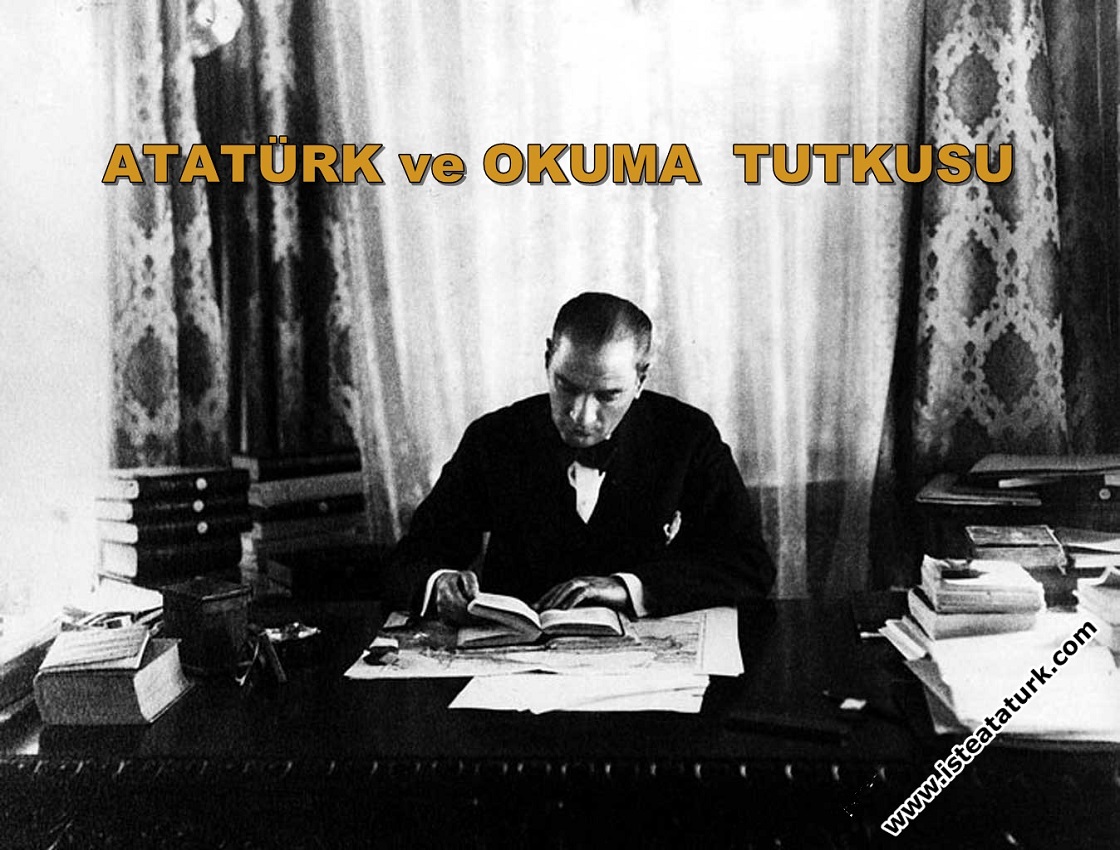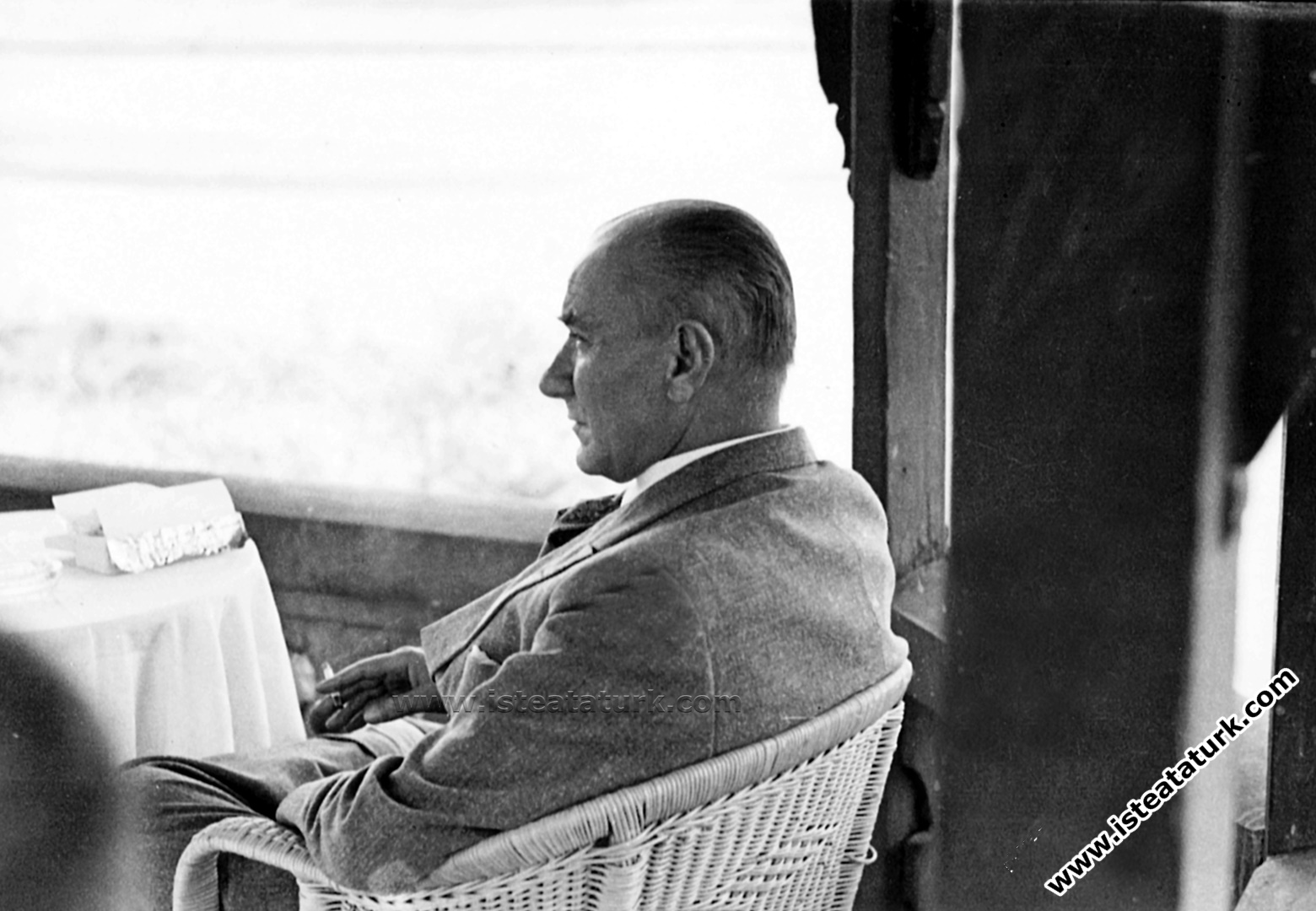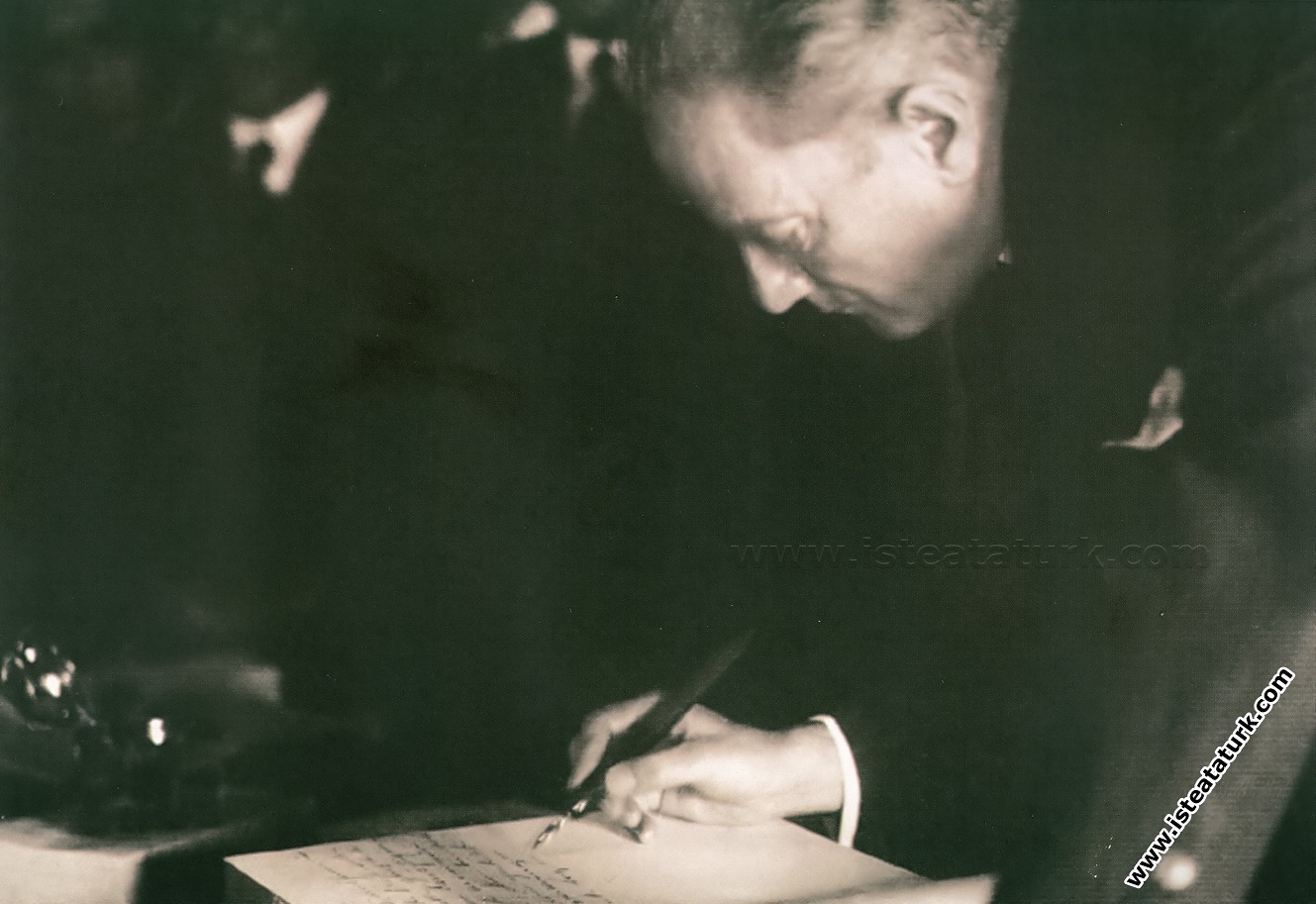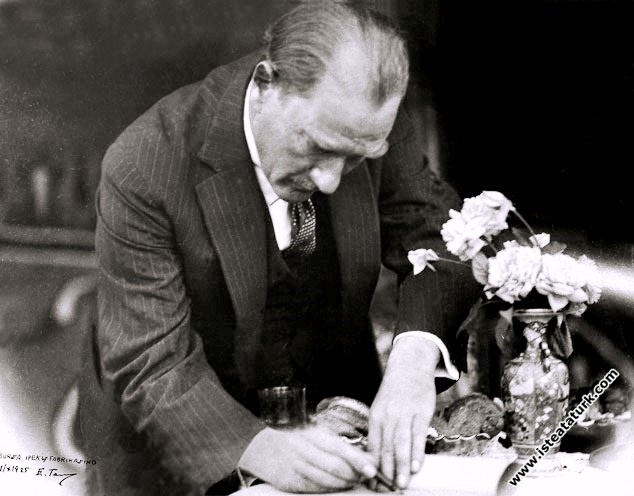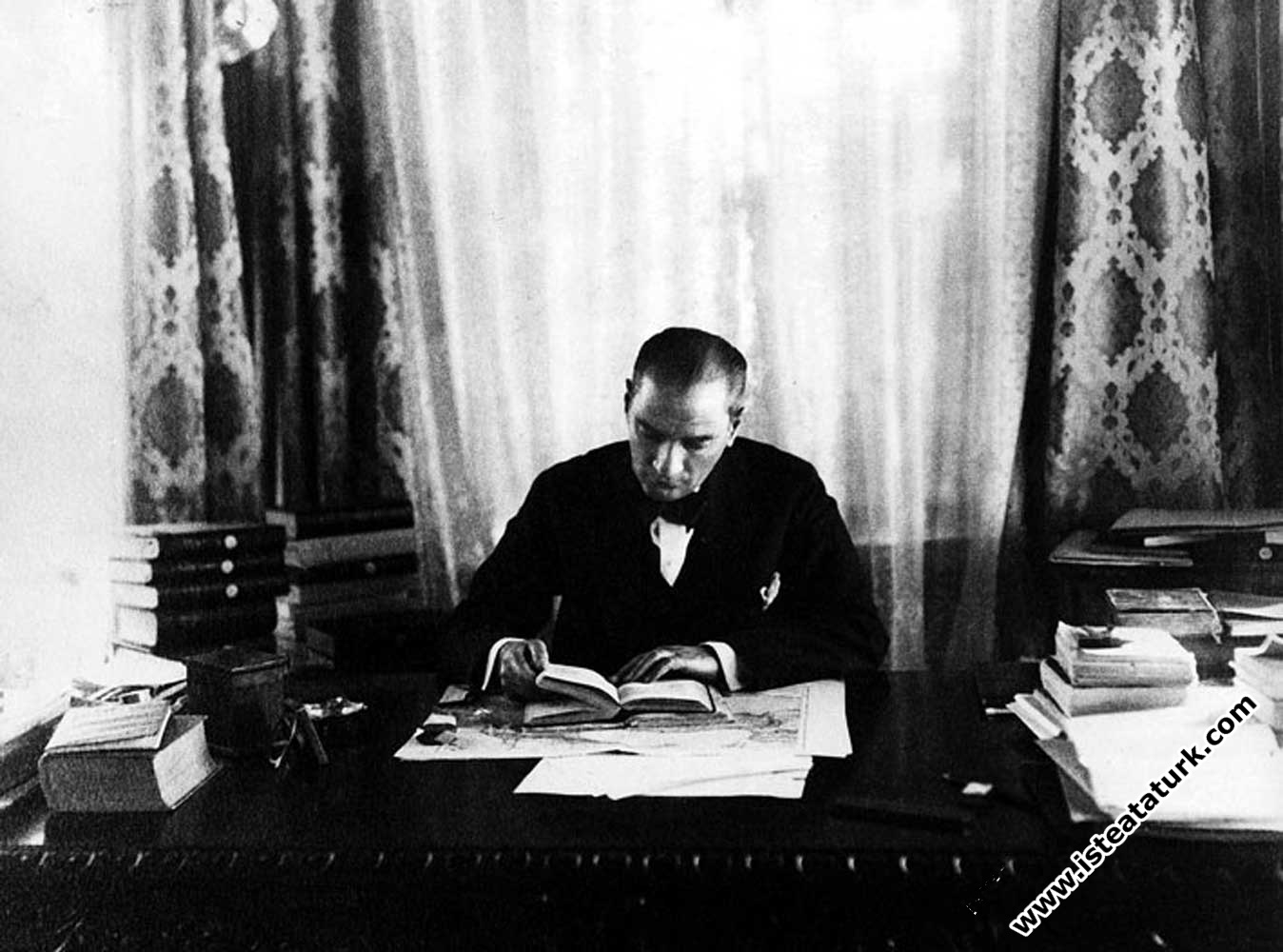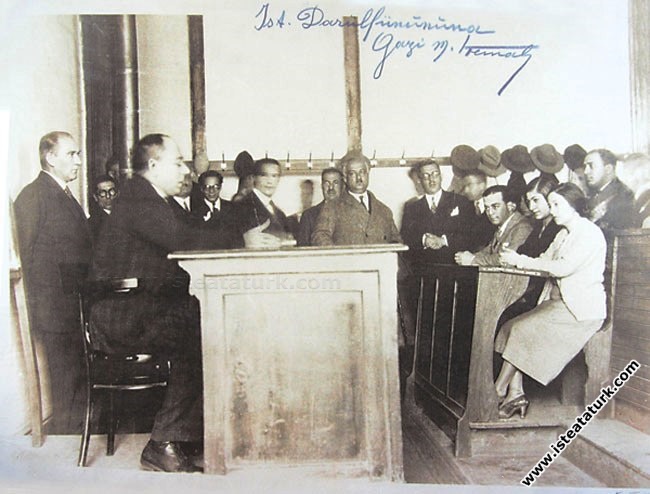
The Place of the 1933 University Reform in Atatürk's Cultural Policy
Character Size
The Place of the 1933 University Reform in Atatürk's Cultural Policy
The Place of the 1933 University Reform in Atatürk's Cultural Policy
In order to understand the place and importance of the 1933 University Reform, named after M. Kemal Atatürk, the founder of the Turkish Republic, in the cultural policy that Atatürk followed, it is necessary to look at the understanding of 'Turkish Culture' that he tried to create from a wider perspective. In its most general definition, culture is the whole of material and spiritual values that a nation has. In this sense, it is necessary to go back a little to explain the period that Atatürk influenced Turkish Culture.
As it is known, the weakness of the Ottoman Empire's military power against the Europeans first emerged when the Siege of Vienna in 1683 turned into a rout, followed by the Karlowitz 'Treaty (1699), which it had to sign in the following years, and with this treaty, the inevitable collapse of the Ottoman Empire began. The Treaty of Karlowitz was the first unfavorable treaty signed by the Ottomans and marks the beginning of the Ottoman withdrawal from Europe. one
The wars fought in the following years often resulted in the loss of the lands one by one, these losses gradually made the Ottoman Empire look like a "sick man" outside, and caused a great moral depression inside and the rapid corruption and collapse of the institutions and systems that kept the empire alive.
At one point, this collapse led the country's administrators to think and seek solutions. The first reformers of the Decline of the Ottoman Empire, turning their eyes to the West, tried to identify the developments that made them especially powerful in the military field and to benefit from them for their own country. Based on this idea, firstly, studies on military technology were carried out, military schools providing modern education were established, and later civilian vocational higher schools were opened. In addition, a series of studies have been carried out in various fields from zoning works to health services. Especially in the first and second Constitutional periods (1876 and 1908), the innovation movements gained momentum. 2
However, all these efforts have always found the resistance of the conservative forces. In this struggle, sometimes the innovators and sometimes the conservatives prevailed, especially the conservative circles, by emphasizing that what was done to achieve their goals meant going against the religion of Islam, blocked the way of innovation, which eventually deepened the social crisis and a lot of blood was spilled on this path.
Another important reason why the innovation movements did not achieve full success and remained in a limited area is the difference in the perception of Western Civilization by the statesmen of the time. The Ottoman Empire, which consists of communities belonging to various religions, races and cultures, together without disintegrating. Concern about retention often prevented a radical and systematic movement from taking place. In addition, both statesmen and Ottoman intellectuals wasted time unnecessarily with discussions about what could be taken from the West and what could be left, and the main elements of Western Civilization were overlooked. This ultimately leads to a duality of culture and institution in the society, and even a conflict. has caused. 3 Before moving on to this subject, which constitutes the starting point of MK Atatürk, it is possible to say the following: As a result of these innovation movements that lasted for nearly 200 years, even though they were prevented, Turkish society had military and civil schools providing modern education, laws taken from the West and courts working according to these laws, and parliamentary parliaments. With the search for a regime, it has turned to the West to an extent that it cannot easily turn back. 4 Lausanne of the Turkish War of Independence. Congratulating him after the conclusion of the treaty, Atatürk said to his circle, "Our real work begins from now on." is known to have said. With this statement, M. Kemal's aim, which is understood to aim at a cultural revolution to bring a new identity to Turkish society, is; It is for the Turkish society to live forever by taking its place in the contemporary world without falling into the same situation again.
According to Atatürk, who took action in the light of the past experiences of the society in which he grew up, there is no significant difference between the concepts of culture and civilization. Both should be considered together. According to him, this was the biggest mistake of the Ottoman rulers. While the Ottomans turned to the techniques (civilization) developed by Europe, they ignored the information system (culture) that revealed this civilization.
Atatürk expressed his views on this subject in his speeches and statements on various occasions as follows: civilization is nothing but this”. 5 “We cannot close our eyes and think that we are living on our own, apart from everyone else. We cannot encircle our country and live without our interest in the world. On the contrary, we will live in the field of civilization as a forward, civilized nation. This is only possible with science and technique. Wherever science and technology is, we will take it and place it in the minds of every individual of the nation. There are no limitations and conditions in science and technology. It will be very difficult for nations that persist in preserving certain customs and beliefs that are not based on any reasonable evidence; perhaps not at all. Nations that cannot overcome the ties and conditions on the way to progress fail to see that life is rational and based on action. They cannot escape from being dominated by the nations that see life in its wide scope and being their slaves.” 6 (27.10.1922, Discourse he gave to teachers in Bursa)
In these and similar speeches, which can be regarded as the first signs of university reform, Atatürk always emphasized the importance of rationality and pointed out the necessity of turning to Western Civilization for this purpose. Based on these ideas, the first step towards modernization in the field of culture was taken to place the state and intellectual life on a secular basis, and with the laws enacted, the political structure of the state, legal and educational system was separated from the theocratic basis and transformed into a modern and secular structure. In addition, it was deemed necessary to spread the new understanding of culture to as wide a base as possible, and in order to achieve this goal, the New Turkish Alphabet was arranged, nation schools were opened in various parts of the country, and thus hundreds of thousands of people were enabled to become literate. Apart from such studies, One of the issues that Atatürk attaches the most importance to is putting culture on the basis of national history. The Turkish History Research Society was established in 1931 as a result of the efforts carried out to gain confidence in the Turkish nation, which has been living with a sense of moral depression and loss due to the defeats that have continued for centuries.7 In terms of the complementarity of all these studies, in all areas of life; A series of reforms, from costume to measurement system, were initiated and realized. The aim pursued here has always been to integrate with the contemporary world.
Another important point to be mentioned here is the efforts to establish high cultural institutions. One of the most important conditions for a society to progress and maintain its independence is for that society to have a say in the scientific world. According to Atatürk, who pointed out science to his nation as the truest guide in life; Universities constitute the most important link in the chain of modernization in the cultural field.
It is necessary to go back a little to understand the nature of the developments in Turkish university life, and therefore the university reform. As it is known, the madrasahs established to carry out the higher education studies of the Ottoman Empire, the far-sighted statesmen who had really bright days during the growth of the Empire, did not do anything to turn the Ottoman lands into the world's science center. They did not refrain from making sacrifices and invited scientists from all sides to their countries. But it was in other institutions during periods of stagnation and decline of the Empire. As a result of unfair practices, madrasahs gradually fell into unauthorized hands, logic, philosophy and natural sciences began to be abandoned here, and as a result, madrasahs became the source of ignorance and conservatism.
In the following years, the need for reform in the society began to be felt, and the higher education institution also attracted attention. Innovative administrators who despaired of madrasahs put into service a new institution called Darülfünun. In fact, although Darülfünun first came to life as an idea in the Tanzimat Period, it could only be opened 18 years later in 1863.8 Darülfünun, which means “House of Sciences”, together with its name, heralded that sciences based on observation and experiment would replace the madrasahs where bigotry and ignorance prevailed. Darülfünun completed its life in two years after its building burned down. After that, Darülfünun's attempt was made four more times at various intervals . Except for the Istanbul Darülfünun, which was inherited from the Republic of Turkey, those who could not stand the pressures they faced and closed down. The Istanbul Darülfünun, on the other hand, became a legal entity with the laws enacted by the Republic of Turkey. In addition, studies covering financial issues have been carried out in order to eliminate the failing aspects of Darülfünun and pave the way for its development.
However, Darülfünun could not use this chance well. First of all, his indifference to the reforms carried out in order to make Turkey a partner of contemporary civilization and culture drew the tray of political administrators. In addition, as a science home, to raise itself to the desired level. His absence made reform inevitable. In summary, the criticism directed at Darülfünun on this subject is as follows: There is no connection between faculties and institutions that will ensure the unity of scientific studies. Some faculties could not exceed the level of a vocational school. Most of the faculty members cannot spare time for scientific studies and are busy with other works. Textbooks and tools are insufficient.
The subject of Darülfünun caused months of debate in the press as well as in the Grand National Assembly of Turkey. As a result, the idea that this institution could not keep up with the developments in Turkey gained weight and more radical solutions were sought. For this purpose, University of Geneva Pedagogy Professor Albert Malche was invited to Turkey and he was asked to prepare a report on Darülfünun. to be able to make an objective and accurate decision. 11th
Prof Malche presented his report, which he started to prepare at the beginning of 1932, to the Turkish Government on 1 June 1932. Although this report was prepared in a short time, it contains a very detailed evaluation. prof. Before Malche prepared the report, he met with political administrators, professors and students of Darülfünun, watched the lectures, had information about their social lives by having a written survey done about the students. In the first part of the report, which consists of three parts, the content of the report is mentioned. In the second part, the existing structure of Darülfünun is examined. The third part includes the suggestions for improvement that should be made. 12
When this report was presented to Atatürk, the justification of the criticisms directed at Darülfünun was revealed. Examining the report with all its details, Atatürk made a decision regarding the abolition of the Darülfünun and the establishment of a new university under the name of Istanbul University when he added the notes expressing his thoughts on various issues. On August 1, 1933, the establishment of Istanbul University was decided.
After that, a "Reform Committee" was established under the chairmanship of Reşit Galip Bey, the Deputy Minister of Education, consisting of Avni (Basman), Rüştü (Uzel), Kerim (Erim) and Osman (Horasanlı) Bey. All studies related to university reform were carried out by this committee. 13
At the time when the staff of the newly established university was being formed, developments were taking place in Germany that would affect this issue. The Nazis, who came to power in the beginning of 1933, made attempts to intimidate the Jewish and Anti-Nazi people in the country. Thereupon, he faced the biggest brain drain in the history of Germany. With the year 1933, II. It is estimated that 250,000-280,000 people fled abroad from Germany in the 6 years between the beginning of World War II, and 3,120 of them were scientists. 14
Some of the scientists who fled outside of Germany established a society called “German Scientists Abroad Aid Society” in Zurich. 15 As the representative of this association, Prof. Philip Schwartz came to Turkey and researched the work environment for his colleagues. When the negotiations with the government were concluded, the way to Turkey was opened for many refugee scientists. Meanwhile, 92 of the 151-person staff of the Darülfünun were dismissed. 16
Among the scientists who came to Turkey through the aid society, there were also those who were world-renowned in their fields. To give a few examples, the following names can be counted: Professors of Economics W. Röpke, A. Rüstow, G. Kessler, F. Neumark; professors of chemistry F. Arndt, F. Haurowitz, EM Allleben; professors of medicine P. Schwartz, R. Nissen, A. Eckstein; music professors P. Hindemith, C. Ebert, E. Zuckmayer; law professor E.Hirsh; urban scientist Prof. E. Reuters.
The scientists who came to Turkey and started to work during this period changed the scientific atmosphere of Turkey. During this period, many new chairs were opened, laboratories and libraries were developed, Turkey began to meet with the world literature, new ideas that influenced Europe entered Turkey through these professors, and new techniques were developed in many fields from medicine to agriculture. In addition, these professors trained and advised scientists who would shape the university life of Turkey after them.
These scientists, who pioneered many things in our country and left permanent works, mostly left Turkey in two periods. Part II. On the eve of World War II, they mostly went to this country to work under better conditions with the invitation they received from the USA, while others preferred to return to their own countries or the USA after the war. There have also been teachers.
After all; The University Reform, which constitutes one of the main points of Atatürk's cultural policy, has been successful to the extent that Turkey's conditions allow. Universities opened one after another in Istanbul and Ankara and in other provinces in the following years opened the windows of Turkey to the West with the momentum given by the 1933 University Reform and scientific studies were carried out on a universal scale. When viewed from this angle; It is possible to see that this aim is realized through universities, which are considered as institutions that will ensure the cultural unity of Turkey. In addition, in this way, the administration of the Republic gained the opportunity to create an enlightened young generation that would ensure its own continuity. The point reached today reveals this situation.
Yunus KOBAL*
* H.U. Atatürk Principles and Revolution History Institute Research Assistant
1 History of the Ottoman Empire, volume 1, ed.: Robert MANTRAN, trans.: Server TANILLI, Istanbul. 1991, p.304; Bernard LEWIS, The Birth of Modern Turkey trans.: Metin KIRATLI, Ankara, 1983 (3rd ed.), p.46; İsmall Hakkı UZUNÇARŞILI, Ottoman History IV. Vol., 1.bl., Ankara, 1978 (2nd ed.), p. one.
2 Standford SHAW, The Ottoman Empire and Modern Turkey Vol. 1, trans.: Mehmet HARMANCI, Istanbul. 1982, p.307; LEWIS. age, p. 46-47; UZUNÇARŞILI, supra, p. 170.
3 Abdurrahman ÇAYCI, “Atatürk and Modernization in the Field of Culture”, Kemalist Thought, Ankara, 1992, p. 822-823.
4 CAYCI agm, p. 822.
5 Enver Ziya KARAL, Thoughts from Atatürk, Istanbul, 1991, (6th ed.), p. 71.
6 Mustafa Kemal ATATÜRK, Atatürk's Speeches and Statements, Ankara, 1989, 2.bl., p. 46; KARAL, supra, p. 73.
7 CAYCI, agm, p.824-828.
8 Necdet ÖKLEM, The Reform of Darülfünun in Atatürk Era, İzmir, 1973, p.22; Cemil BİLSEL, Istanbul University History, Istanbul, 1943. p.13; Osman ERGİN, History of Turkish Education, vol: 1-2, Istanbul, 1977, p.550; Yunus KOBAL, The Development of Our Universities and Contributions of German Scientists, (Unpublished Master's Thesis). Hacettepe University, 1994, p.40; Emre DÖLEN, “Darülfünun”, Encyclopedia of Turkey from the Tanzimat to the Republic, p. 476.
9 Abdurrahman SILER, Darülfünun in Turkish Higher Education, (Unpublished doctoral dissertation). Hacettepe University, 1992, p. 16.
10 Education was resumed for the second time under the name Darülfünunu Osmani (1870-1873), and public courses were also given at the beginning. However, here, especially the empirical lessons were met with public reaction and some teachers were accused of being irreligious.
The Darülfünunu Sultani (1874-1881) attempt a year later was left unfinished due to similar reasons and financial difficulties. After that, a new attempt was made in 1900 under the name Darülfünunu Şahane and this was the Il. After the proclamation of the Constitutional Monarchy, she moved to Zeynep Hanım Mansion in Vezneciler and lived the rest of her life under the name of Istanbul Darülfünunu. With a regulation issued on April 12, 1912, the branches of the Darülfünun were named as faculty. Darülfünun, which gained scientific autonomy in 19, preserved this structure until the proclamation of the Republic.
11 Abdurrahman ÇAYCI, “Atatürk Science and University”, Kemalist Thought, Ankara, 1992, p. 789.
12 For the full text of this report, see Ernst HIRSCH, World Universities and the Development of Universities in Turkey, Istanbul. 1950, p. 229-295 or for the original text with Atatürk's lines, signs and notes, see Utkan KOCATÜRK “Atatürk's Notes on University Reform”, Atatürk Research Center Journal, vol: 1, number: 1, p. 3-96.
13 Mustafa ERGUN, Atatürk Era Turkish Education, Ankara, 1982, p. 141.
14 Helge PROSS, “De Geistige Enthauptung Deutschlands: Verluste durh Emigration. Nationalsozlalismus und die deutsche Universitaeten”, Universitaetstage, Berlin. 1966, pp.143-144
15 Horst WIDMANN, Atatürk University Reform, trans.: Aykut KAZANCIGİL and Serpil BOZKURT, Istanbul. 1981, p.41; Klaus Detlev GROTHUSEN, Der Scurla Bericht, Frankfurt/Main, 1987, p. 8.
16 ERGUN, supra, p. 141-142.
